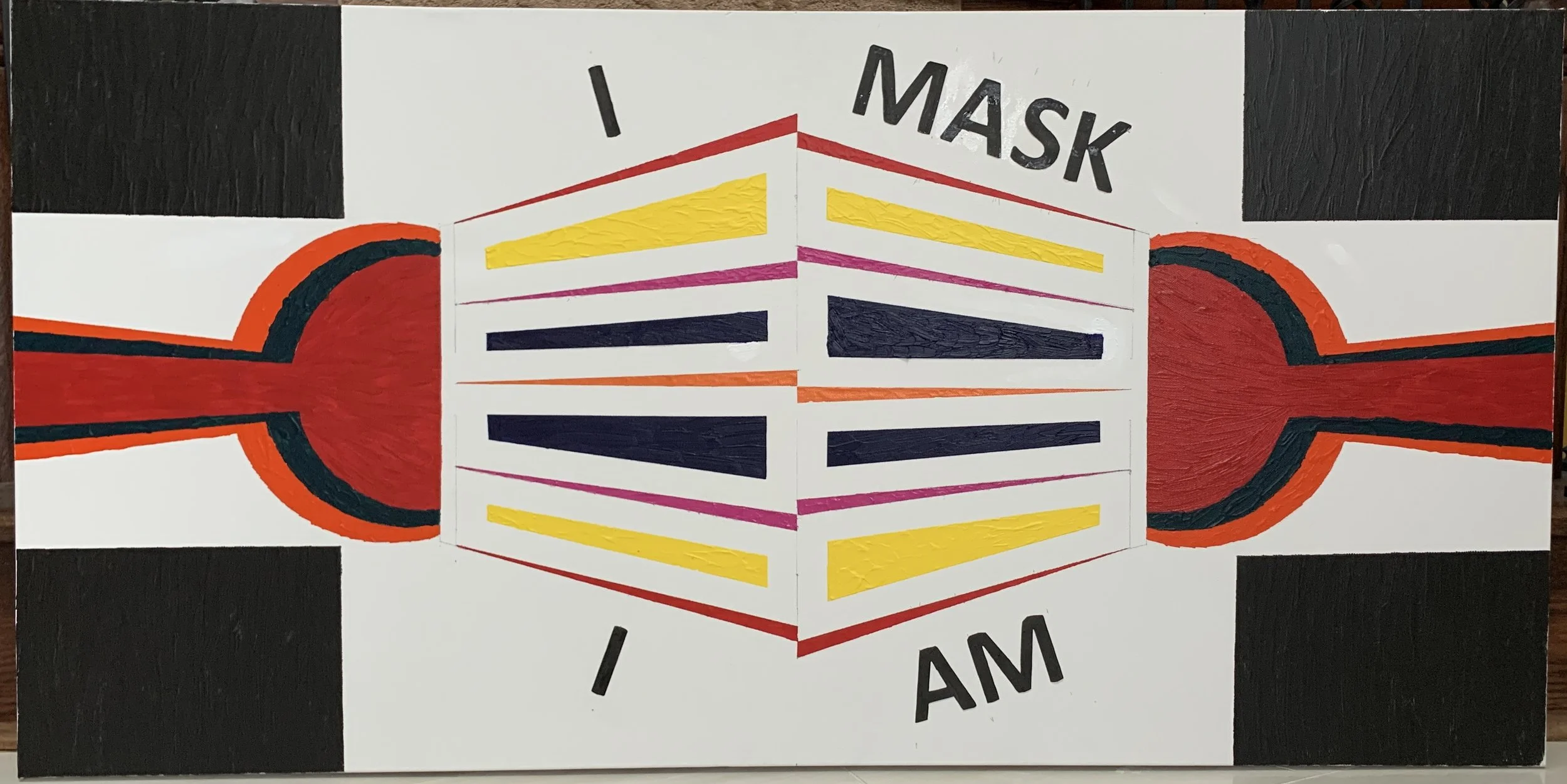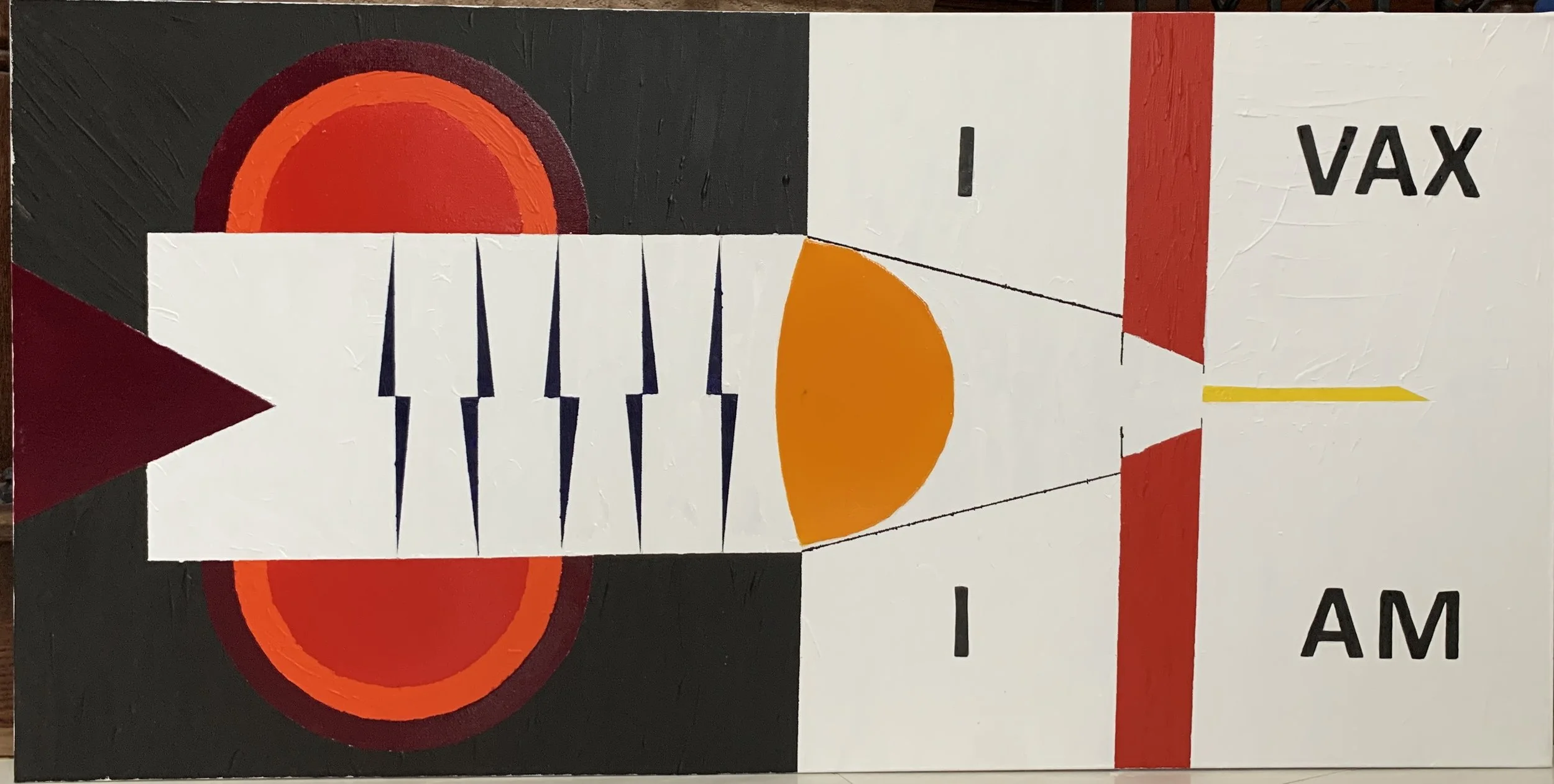I Mask, I Am | I Vax, I Am
As a geometric abstract artist, pre-occupied with evoking emotional and visual responses with shapes of various kinds, activism is generally not a regular feature of my works. The featured body of work speaks to the Covid-19 pandemic, a scourge that has brought with it a new set of sensibilities, one that even the most ‘woke’ among us never anticipated. On a personal level, and in my vocation as an artist, it also brought with it a change in perspective.
These two works explore multiple dimensions — arts, philosophy, geometry and medicine, and unlike earlier works, embrace the realm of conceptual art. Both the art and the phrase imprinted on the canvas share a singular purpose — to prompt the observer to reflect on a contemporary event, that of Covid-19.
The names ascribed to these works, Syringe (2021) and Mask (2021) also align with the current sentiment. While the interpretation of the art on the canvas may be apparent, the imprinted phrase, though simple, is open to different interpretations. For students of philosophy, the works of René Descarte, Discourse on Method (1637) and the use of the phrase— “ I think, therefore I am”, (c ogito ergo sum in Latin, or Je pense, donc je suis in French), may come to mind in viewing this series. Such works come to mind as the global community navigates the maze of science, politics and ideologies in search of the truth.
While the science of Covid-19 becomes clearer with every day that passes, its complex effects on individuals, families, neighborhoods, villages, and towns are yet to fully unravel. From the costly disruption of schooling among the youth to the secondary mental effects of extended isolation, the ramifications are extensive. As those whose jobs disappeared in the accompanying economic collapse deal with their pain, those who remain employed suffer the vagaries of a compulsory work-from-home culture and its various hybrids. The effects on various sectors of the global economy is a reality that is palpable. This discourse will be incomplete without a mention of the disparity in the level of vaccination between different countries, with high- and middle- income countries having greater access to the much-desired vaccines, and scores of countries missing the standard — a vaccination level of 40 percent of a country’s population, set by the World Health Organization (WHO).
In featuring these two works, the artist’s role is simple; to allow the observers to view and interpret the paintings as they see fit. No doubt, these paintings prompt a number of questions; they may even become subject to intense debates, provoking a discussion on the interplay between science, politics, ideologies, and the not-so-obvious interplay of philosophy and human behavior. Nevertheless, it is my hope that, one day, when Covid-19 is finally overcome, these works may not be as relevant as they are today, but simply become a reminder of a past not so long ago.



